An Interview with James Pomeroy
December 23, 2009 - MinersvilIe, Utah
Questions and e-mail interview by Bob Green
Background:
Jeffrey
Dale Surfboards were made by Jeffrey Wilson and Dale Schleusener [see Note 1].
They also made boards for Val Surf and Jack's Surfboards. Jim Pomeroy
managed the Jeffrey Dale store in Anaheim, California, and also worked
at Jack's Surf Shop as a ding fixer.
|
1. When did Jeff start making bellyboards?
I am pretty sure it was 1964.
2. The photos I have seen look like short versions of long boards. Who was shaping them?
There
were very few hand shaped boards. Most of them were moulded, but the
first of them were shaped by a guy named John Mendoza. (I think that
was his name). John Mendoza didn't surf, but could shape, if you stood
next to him and told him what to do. After the first one, you could
tell him to shape 30 belly boards and they would come out like you had
a machine shape.
|
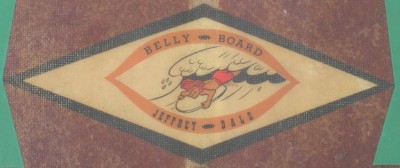 Jeffrey Dale Logo. Photo by Rod Rodgers Jeffrey Dale Logo. Photo by Rod Rodgers
of a board from Menno's paipo collection.
(Click on pics for larger views.)
|
3. Were these boards meant to be ridden prone or as kneeboards?
They were made for prone belly boarding. I am sure someone kneeboarded, and even probably stood up on them.
4.
Can you tell me a bit about the design of these boards? One was
advertised as 3'11" with a redwood stringer. Was there much evolution in
the design?
The
basic design stayed pretty much the same. As far as evolution goes they
went from hand shaped to mould. The redwood stringer was routed in
which formed a very strong lamination. Some of the boards were moulded
with a layer of fibreglass mat imbedded in the foam. These were very
strong, almost bullet proof. Shape of the fin changed about 1965, from
a triangle to a can opener. Several of them went to rental companies
from the East Coast to Hawaii. 5.
Were there team riders for these bellyboards or did you just rely on
feedback from customers? Do you recall any guys who rode these boards
well?
I
surfed one for years but not as a team member. They were a fun shape
and I used it in pretty much any size wave that came along. Back then,
surfers owned 1 board instead of a quiver. I guess the belly board and
my surf board was my quiver.
Jim Pomeroy riding a wave at his local break, Pohiki, on the Big Island, where he lived for 20 years.
|
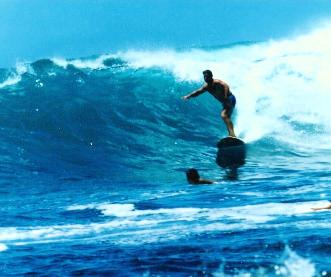
Photo courtesy of Jim Pomeroy.
|
6. What types of waves were these boards made for?
They
were made for fun waves. Jeff had some guys ride 20' Sunset Beach in
Hawaii and got some film of it for advertising. I have the clip, but
never saw it used as an advertisement. I think they were made for entry
level belly boarders so you can figure 3' to 4' waves, but I have seen
them on much larger waves.
7. Any idea of how many of these boards was sold? Who was the market?
Could
be in the thousands. Jeff had a mould that could pop out 3 at a time.
They could crank them out. Jeff liked the orders from the larger rental
companies in Hawaii. The market was the parents of young kids wanting
to get into surfing. These boards were inexpensive and a good way to
learn about the surf.
A loyal customer examines a red Jeffrey Dale paipo board at the shop
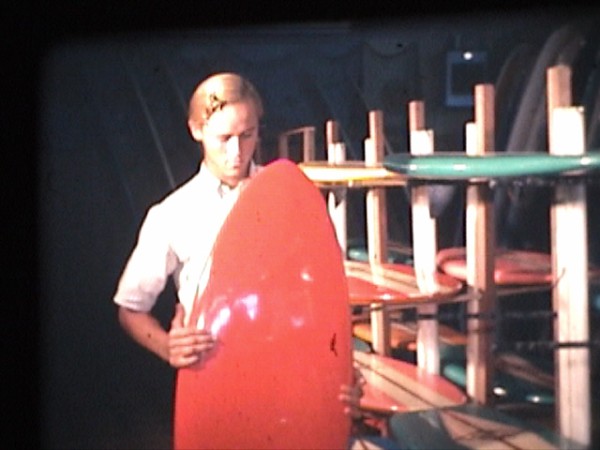
Photo courtesy of Jim Pomeroy.
8. Which other shops sold your bellyboards?
Jacks, Paul Hunt, there was a company in Corpus Christie, Texas. I forgot the name. I was 17. I'm sure there were more.
9. Did you stock any other types of bellyboards?
No. Just the one shape, but finish and stringers were the only variety.
10. What do you know about the Jack's bellyboards and who shaped them?
I know we made some for Jack. We put his logo on them, but the shape was unmistakable.
11. When did the market for bellyboards drop off?
Not
sure. I went into the Army in 1966, and when I came back, Tom Morey was
making a thing called a Boogie Board. The rest is history.
12. Do you still stock any bellyboards?
I don't stock anything. Just custom. I will make a belly board if that is what you want. It's a pretty easy shape to duplicate.
13. Any other comments?
The
information I provided, is as I remember it. It should be accurate for
the most part. I have been in this business from time to time my whole
adult life. I started out working for Jack Hokinson at his shop on
Orange and Brookhurst in Anaheim. I think that was 1963.
Figure A: Jeffrey Dale Belly Board, Green
Board from the Menno Collection: 48 x 19-1/4 x 3 (inches)
|
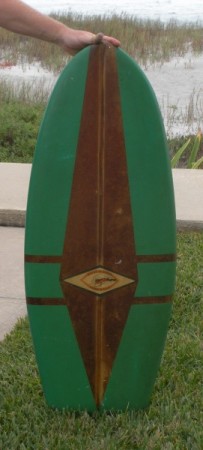 |
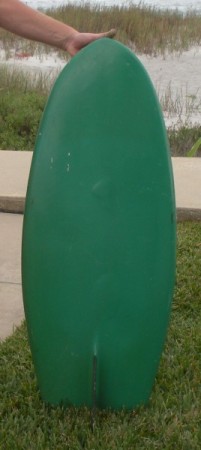 |
|
|
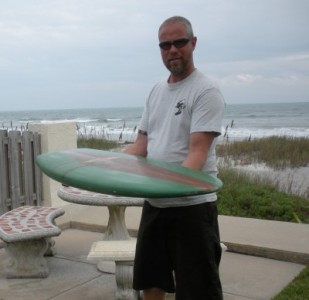 |
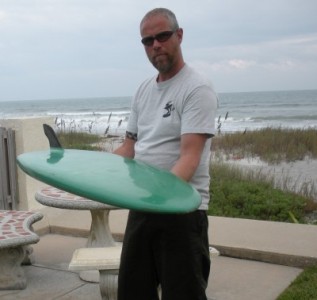 |
Figure B: Jeffrey Dale Belly Board, Yellow
|
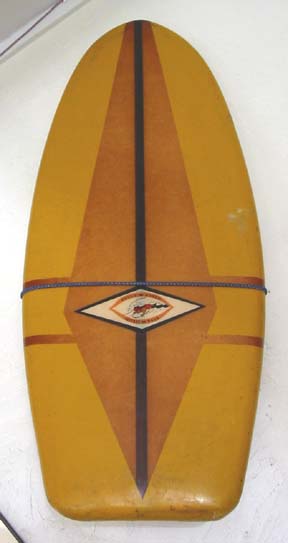 |
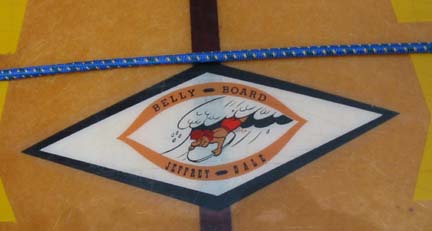 |
Below
are two Jeffrey Dale Belly Boards, blue [Figure C] and red [Figure D.].
The only difference between the two is the color and condition.
They were both made by Jeffrey Dale using mat blanks with a
veneer stringer. Looks like the blue one took quite a hit on the
skeg. If you knocked one of those you had to re-glass the whole
tail. Well built boards.
The
veneer stringer was just for looks and wasn't even routed in. The fiberglass
mat made the board plenty strong. I am surprised how dinged up it got.
They probably let a pressure ding leak for a while. From the shape of
the fin and material, it is pre-1964 and probably one of the early ones.
After 1964, the fins were a can opener shape.
Figure C: Jeffrey Dale Belly Board, Blue
Approximate measurements of board: 48" in length, 19" at widest point, 2" at thickest point and a 4" fin
|
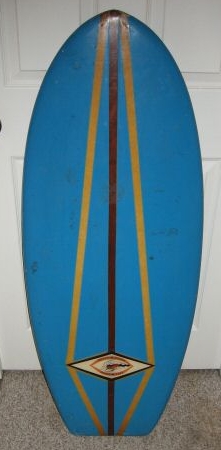
|
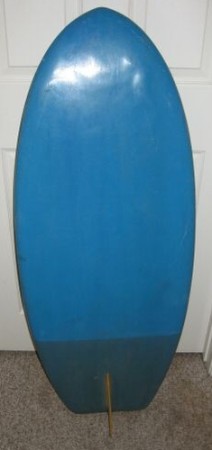
|
|

|

|
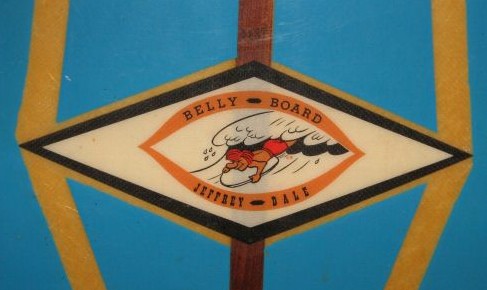
|
Figure D: Jeffrey Dale Belly Board, Red 48 inch
|
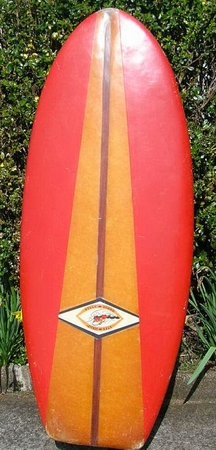
|
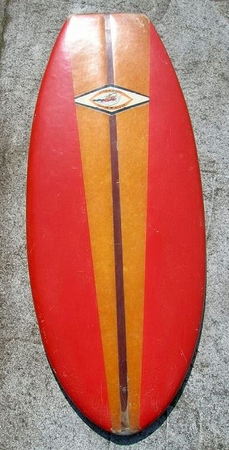
|
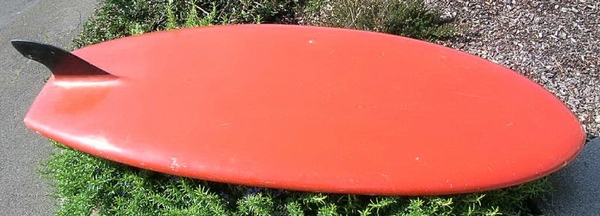
|
|
|
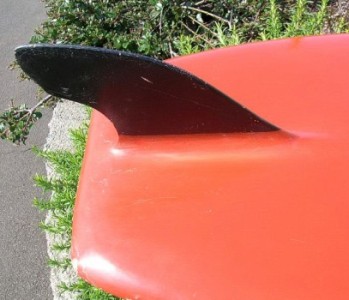
|
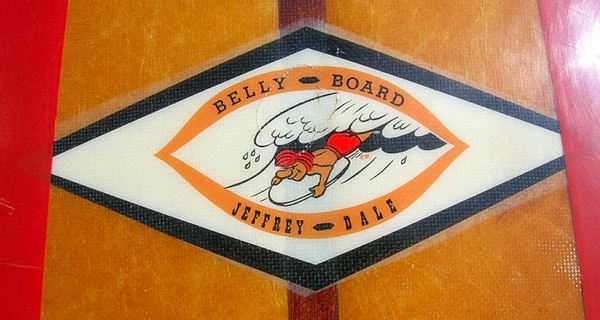 |
|
Note 1: According to John Schleusener, the correct spelling of Dale last name is Schleusener. (Schleusener, John. "The Paipo Interviews." E-mail message to Rod Rodgers. October 27, 2011.)
Other
Information:
|
|